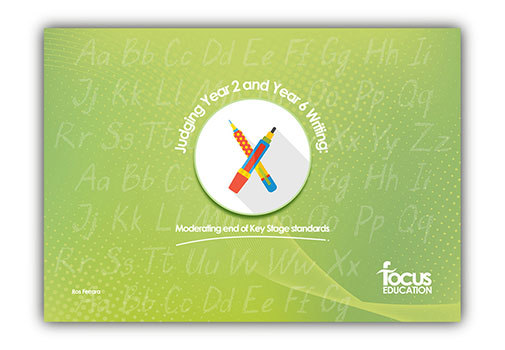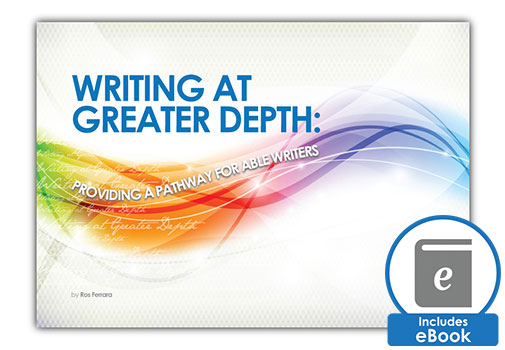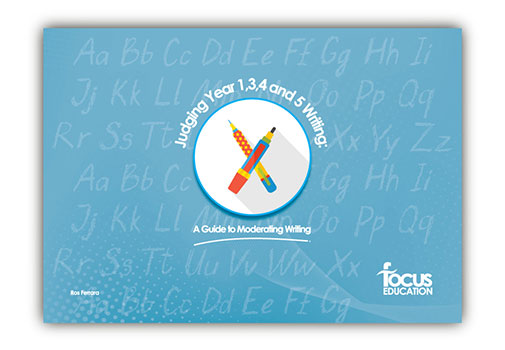
Assessing writing in primary schools for year 2 and year 6– a step in the right direction… Part 1
So, we have the promised revised assessment frameworks for writing for Year 2 and Year 6. First of all, what are the changes?
Year 2
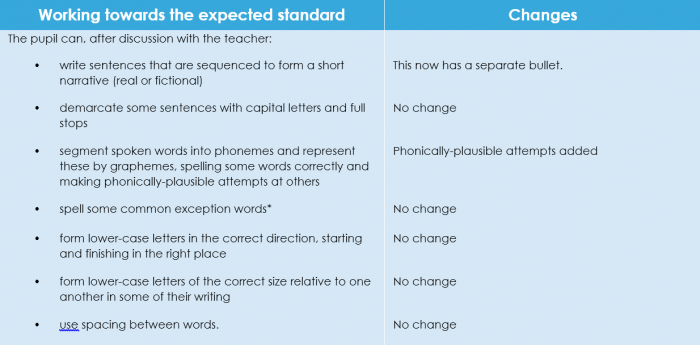
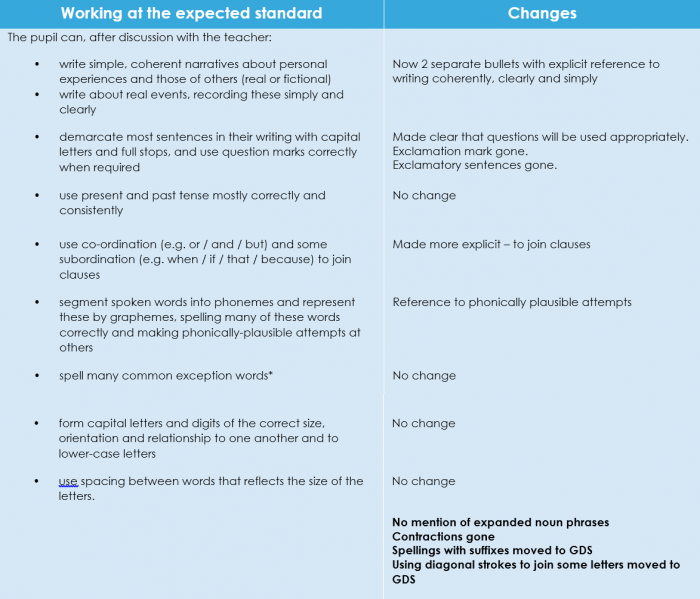
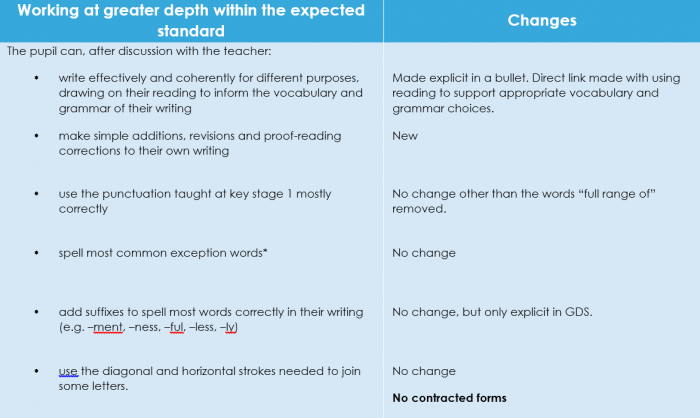
Year 6
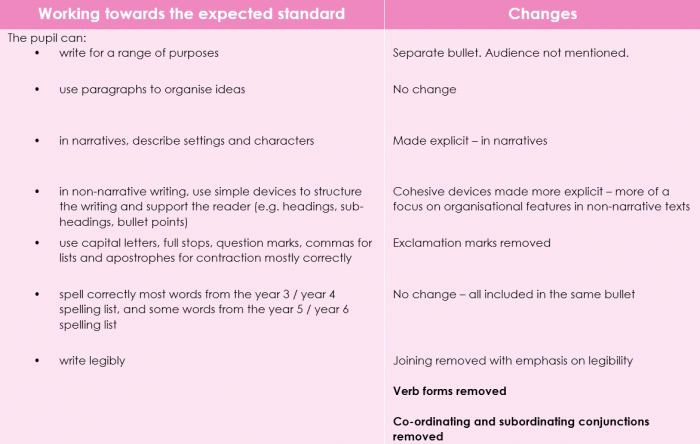
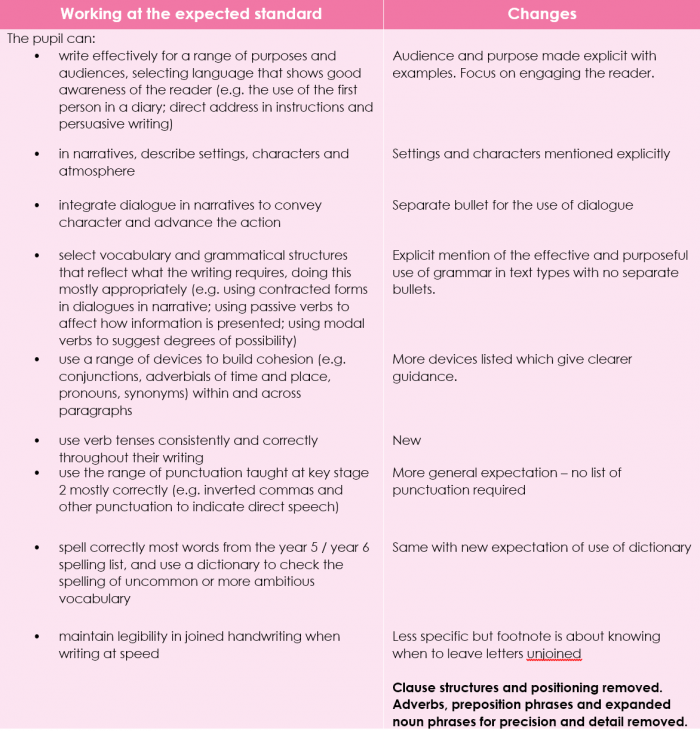
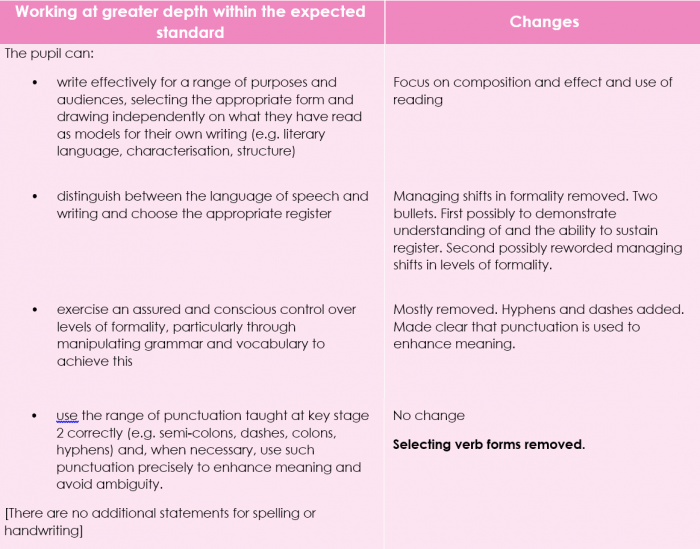
Without a doubt, this is an improvement. In general, we have, quite rightly, a shift towards, composition and effect in both Year 2 and Year 6. After all, all the grammatical structures and features we teach are precisely for that purpose; to create impact for particular purposes and audiences. There is also a welcome emphasis on the purposeful, appropriate and effective use of the grammar, vocabulary and punctuation rather than just having included it. There are no bulleted lists of required grammar or punctuation.
For Year 2, the exclamatory sentence beginning with how or what and including a verb has gone. What a relief that is! No more lists of possible manufactured exclamatory sentences at the end of writing about outings or experiences or comments on the behaviour of characters in stories.
Questions to be used when required. Presumably this means for a real reason; before hot seating or a trip or a visitor and when asking questions about books or questions they would like to find answers to in topics.
Narratives and recounts are mentioned for children at the expected standard with the expectation that these will be “simple” and “clear”. Explicit reference to expanded noun phrases has disappeared, yet even in a “simple” text written by a Year 2 pupil, there would be detail added using expanded noun phrases; after all, this is a grammar objective in Year 2.
Only those children working at greater depth now have to demonstrate that they can include words which use the suffixes taught in Year 2. This also is a relief, as to use the suffixes “ness” and “ment” involves changing adjectives or verbs into nouns. Constructing sentences with these is a sophisticated skill. For example:
The children were excited when the clowns appeared.
Everyone saw the excitement of the children when the clowns appeared.
The children clapped with excitement when the clowns appeared.
Other changes here are children writing for a range of purposes and editing and proof reading their own writing. It is unclear as to exactly what is intended by a range of purposes here, but obviously beyond the “simple” narratives and recounts already mentioned. The explicit inclusion of editing and proof reading has obvious implications for making sure that children are being taught how to edit and proof read effectively.
An important change for pupils working at greater depth, both in Year 2 and Year 6, is that of making use of models from reading. Again, an extremely welcome addition as this is how you become a good writer, drawing on what you read and making choices about how to use what you have read in your own writing. This makes our role in encouraging and offering some guidance in book choices absolutely crucial as well as how core texts are used in learning sequences.
For Year 6, there is clearer guidance about cohesive devices so that children who are working towards are expected to be able to use organisational features to structure a text and guide the reader whereas those who are at expected would be able to use vocabulary and grammar related cohesive devices to ensure that wring has “flow”. There are examples listed for greater clarity.
Grammatical features and language choices are no longer listed, but should be used appropriately and purposefully and are linked to the overall purpose of the text. Examples are given, but there is no bulleted list. This is also the case for punctuation which thankfully means we will not have to write about Lily-Mae who likes to wear a rose-coloured dress when she ventures out on her fact-finding missions.
Whilst there is now no specific mention of using “adverbs, preposition phrases and expanded noun phrases for precision and detail”, it would seem to me that this is implicitly included in writing for purpose and audience and language choices and the use of vocabulary and grammatical structures. So, no change really.
For children working at greater depth in Year 6, apart from the link to reading already discussed, there is specific reference made to understanding register and also to controlling levels of formality. These have replaced the previous expectation about managing shifts in formality. In reality, is that not still what is being expected?
There also seems to be a less rigid approach to the secure fit thinking. Best fit it most certainly is not. However, the statements below would perhaps seem to mean that, for example, a child who is an outstanding writer, but has real difficulties with spelling could be a greater depth writer.
- “A pupil’s writing should meet all the statements within the standard at which they are judged. However, teachers can use their discretion to ensure that, on occasion, a particular weakness does not prevent an accurate judgement being made of a pupil’s attainment overall. A teacher’s professional judgement about whether the pupil has met the standard overall takes precedence. This approach applies to English writing only.
- A particular weakness could relate to a part or the whole of a statement (or statements), if there is good reason to judge that it would prevent an accurate judgement being made.”
This seems fairer without reverting to the judgements which were made using APP. APP meant that a child could be judged at a certain “level” of attainment with poor spelling, inaccurate punctuation and sometimes even a core skill missing.
We need to wait for the promised further guidance and clarification and exemplification to see exactly what is required from these new assessment frameworks.
I sincerely hope that there will not be a grid produced. Most unfortunately, within 24 hours of the publication of the new frameworks, the internet was full of grids based on them. To my horror, some of these have bulleted or separated out the examples given. In any case, such grids should only be used to support those final judgements in June, not as a teaching tool.
What should we do now?
- Teach the Year 2 and Year 6 curriculum. Just because something is not included in the framework, does not mean that the children do not need to learn it!
- Use high-quality texts and draw on them on models for writing. This is great for all the children, not just those with potential to write at greater depth.
- keep the focus on purpose, audience and impact on the reader.
- Teach and develop editing and proof-reading skills.
- Read widely in the classroom and encourage children to read widely themselves.
- Remember that we are teaching the children new skills and not trying to assess them against a framework based on end of year expectations.
- Watch this space for part 2, when we have the promised guidance.
Continue the conversation on assessing writing in primary schools…
To discuss assessing writing in your school further, join me on Twitter @FocusRosf. I will be writing a second article with the promised guidance for assessing writing, so keep checking the blog for updates. For related resources, publications and courses, get in touch with the Focus Education office on 01457 821 818. You can enquire about Focus inset consultancy here.
Related Products
Ros has over 30 years’ experience working in teaching and leadership roles in schools, both nationally and internationally, as well as leadership roles within Local Authority advisory teams.
With extensive experience in all aspects of school improvement and contexts, as well as specialisms in English and EAL, Ros has developed inspirational, creative resources and training which puts English at the heart of the curriculum.


